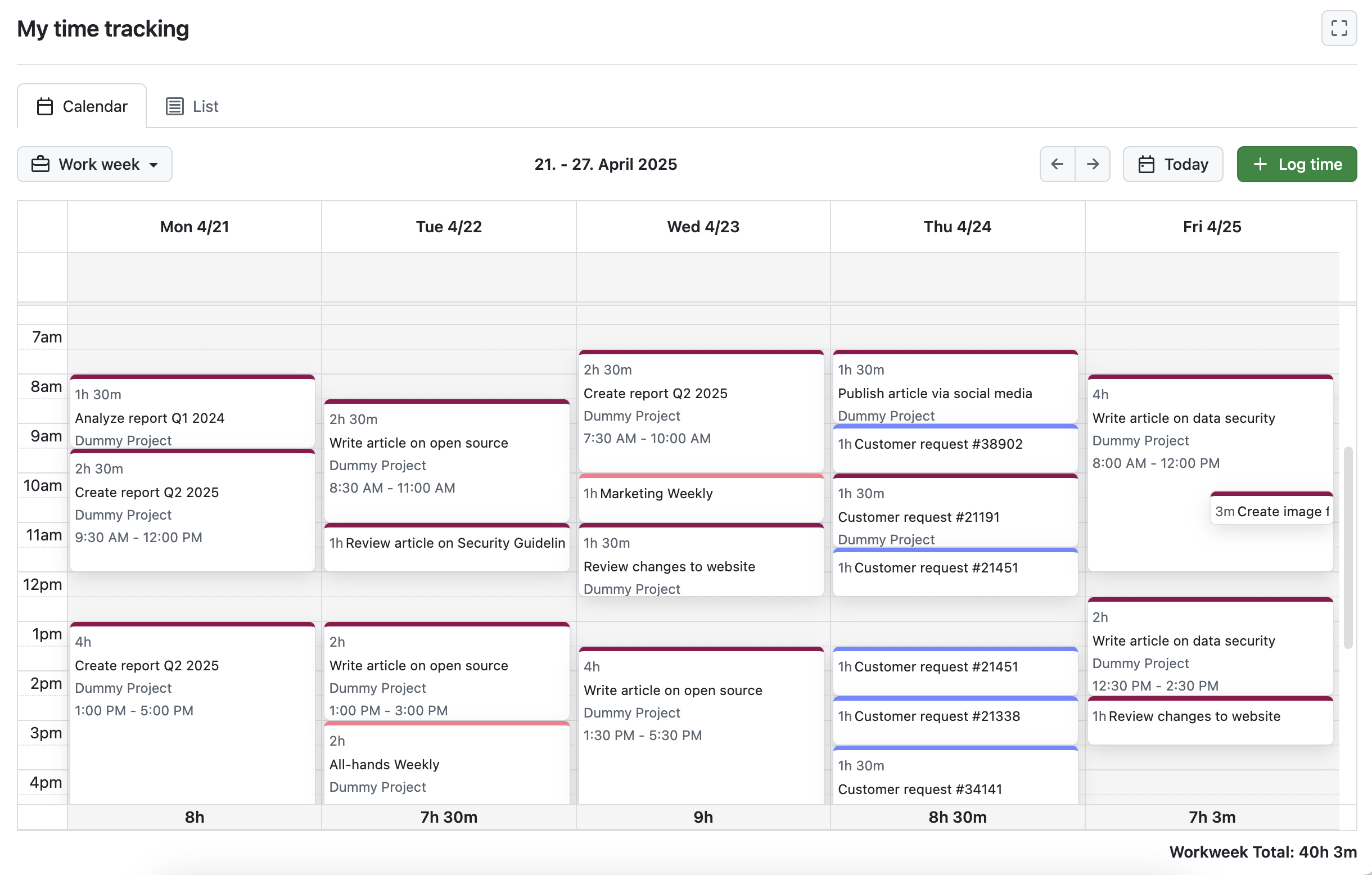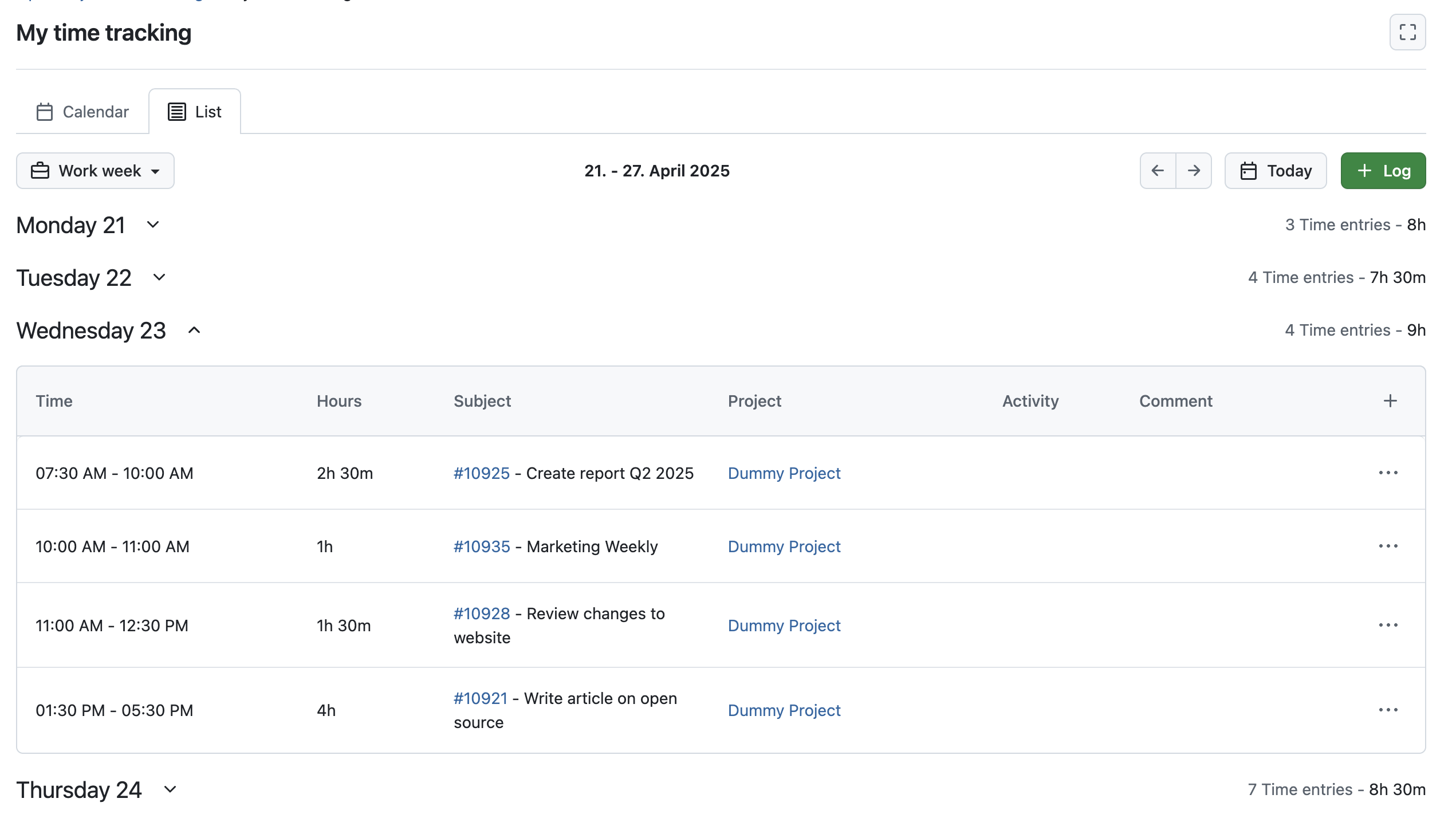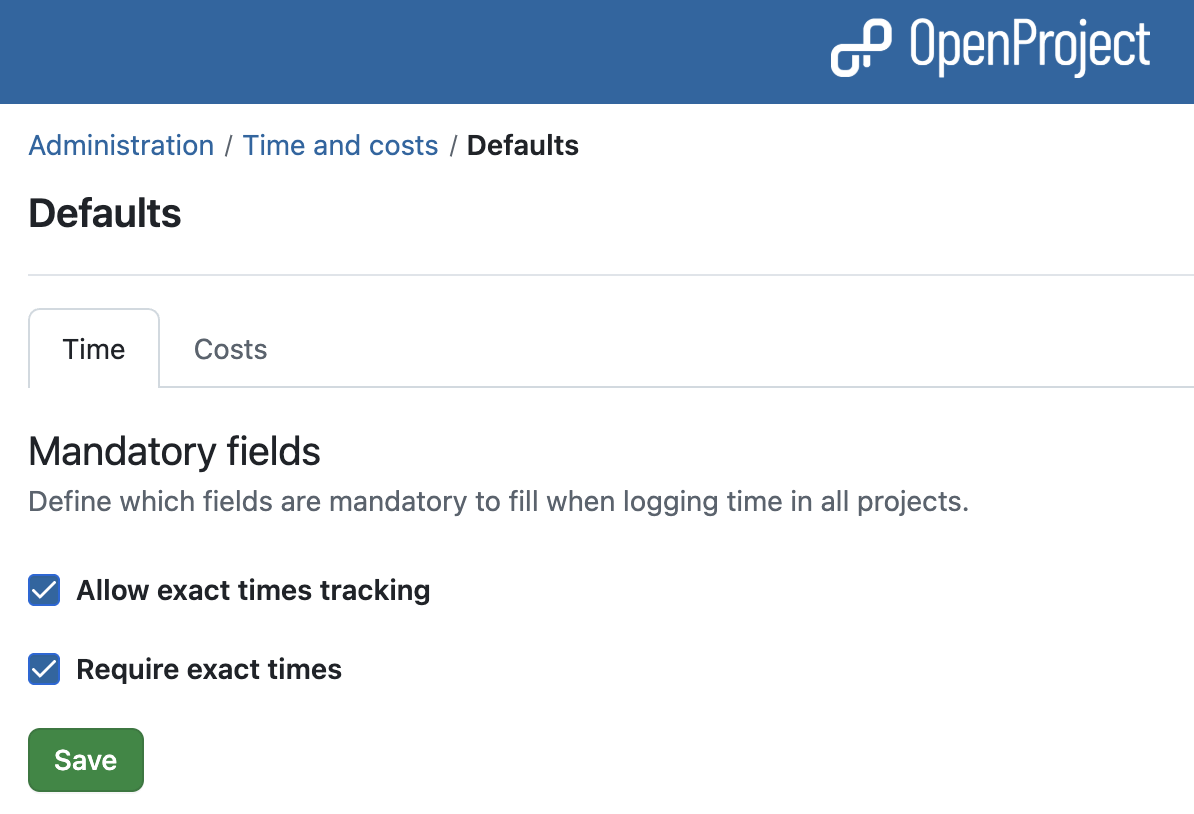
My time tracking: Structure your workday with a calendar view
Nota
This module is planned to be released with version 16.0 on May 21, 2025. It will be available in all editions, Enterprise and Community.
Self-organization has become a key skill in today’s remote and flexible work environments. It’s not unusual for new employees to be asked during job interviews: “How well do you organize yourself?” Teams are expected to work independently. Managers are expected to trust them. But trust needs transparency — and the right tools to support it.
One of the most essential aspects of self-organization is managing your own time. And it’s not just about logging hours. It’s about giving people structure, helping them reflect on their work, and enabling teams to stay aligned without micromanagement.
Starting this May with OpenProject 16.0, we are introducing the My time tracking module. It comes with a calendar view and makes it easier than ever to view, log, and manage personal time entries with start and end times.
Read this article to learn more about this exciting update, including two practical use cases.
Track personal start and end times in a calendar view – How it works
Modern time tracking isn’t just about numbers — it’s about visibility. That’s why OpenProject 16.0 will introduce a new My time tracking module, enabling users to log their time with start and end times and visualize it in a calendar view.
This global module is designed for personal use: it helps users reflect on their daily and weekly workload, see time blocks at a glance, and create new entries directly from the calendar. Of course, every time entry in OpenProject is still connected to a work package — so your time tracking remains structured and linked to tasks.
![]()
Depending on your configuration, you’ll see either a calendar or list view:
- If exact time tracking is enabled, the calendar view is shown by default.
- If not, the list view is shown — a simpler overview for users who only track hours, not the start and end times.
Display your calendar either in a Day, Week, Work week or Month view. In the calendar, users can:
- Click and drag to create new entries.
- Move entries to different times or days.
- Resize entries to adjust their duration.
- Move an entry to the “No specific time” row on top of each day, to remove start and end time.
Each time entry is color-coded based on the type of its work package — just like in the Team planner, so you can easily identify different items of work.
You can also visually distinguish between working (lighter grey) and non-working days (darker grey). Choose the Work week view to only see the working days that are enabled under Administration → Calendars and dates → Working days and hours.

Consejo
Admins can enable exact time tracking in the global administration — and enforce it with the setting Require exact times (Enterprise add-on). This helps organizations improve accountability and prepare for future resource planning features. See the two examples below for different use cases.
When is the list view the better choice?
If the exact time tracking is not enabled, a calendar view does not make much sense. The calendar in the My time tracking module then adds all time entries at the top of each day, which clutters the view. Here, the list view comes in handy and is also set as a default if the exact time tracking is disabled.
Of course, you might also choose the list view if exact time tracking with start and finish date is enabled. It displays your logged times in a collapsible list that also shows sums and other logged information.

Practical benefits: Time tracking for freelancers and growing teams
The new My time tracking module supports different ways of working — from independent teams to organizations with structured planning needs. Let’s look at two example scenarios to show how flexible time tracking with start and end times can be.
Example 1: Small team with freelancers — balancing autonomy and structure
Imagine a small digital agency in Berlin. The team consists of five full-time employees who manage their own schedules and two freelancers who invoice by the hour. Everyone tracks their time — not because they’re told to, but because they want to stay on top of their workload.
With the new calendar view in OpenProject, all team members can:
- Quickly enter time directly by clicking and dragging in the calendar.
- Get a visual overview of how much time they’ve spent on different tasks.
- Spot gaps or overloads in their week at a glance.
For freelancers, start and end times provide the exact data that is sometimes needed in cost reports. For the whole team, it’s a simple way to reflect, stay aligned, and avoid time slipping through the cracks — all without micromanagement.
Example 2: Growing teams who need efficient resource management
Now consider a mid-sized city administration in Germany. The digitalization team has grown to 20 employees, and it’s become harder for department heads to keep an overview of team capacity. At the same time, the organization wants to foster trust and avoid excessive reporting requirements.
By using the My time tracking module with start and end time enforcement (available in the Enterprise edition), admins can:
- Ensure that team members always track their time precisely
- View consistent data across the organization for reporting and planning
- Identify over- or under-allocation of resources early on
Time entries remain private in the personal module, but the structured data feeds into cost reports and will lay the foundation for upcoming resource management features.

Importante
The ability to require exact time tracking is available in the Enterprise Professional plan. You can activate it in the Administration → Time and costs → Defaults.
Summary: Calendar-based time tracking with start and end times
The new My time tracking module in OpenProject 16.0 helps you log, review, and manage your personal time entries more intuitively. With a calendar-based interface and support for start and end times, it makes time tracking more visual, structured, and user-friendly.
Whether you’re working independently or as part of a growing team, this module provides the tools you need to stay organized, maintain transparency, and prepare for future planning features.
- Two views available: Calendar (default if start/end time tracking is enabled) or list view (default if disabled).
- Calendar interactions: Click and drag to create entries, move or resize them, or remove times by dragging to the “No specific time” row.
- Color-coded entries: Time entries inherit the color of the work package type to provide visual context.
- Workdays vs. non-workdays: Configurable workdays appear with a lighter background, while non-working days are dimmed. A “Work week” toggle hides weekends.
- Admin settings:
- Enable start and end time tracking (all editions).
- Enforce exact time tracking (Enterprise only).
- Benefits for teams of all sizes:
- For small teams: intuitive tracking and visual workload overview.
- For larger organizations: consistent data for reporting and long-term resource planning.


